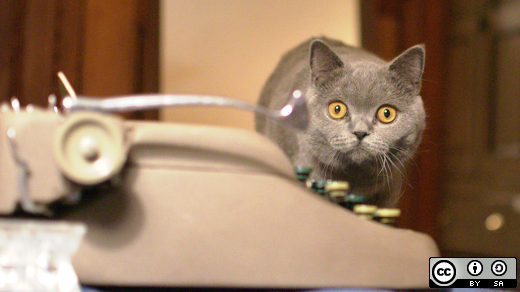Documentation seems to be a perennial problem in operations. Everyone agrees that it's important to have, but few believe that their organizations have all the documentation they need. Effective documentation practices can improve incident response, speed up onboarding, and help reduce technical debt—but poor documentation practices can be worse than having no documentation at all.
The 7 sins
Do any of the following scenarios sound familiar?
- You've got a wiki. And a Google Doc repository. And GitHub docs. And a bunch of text files in your home directory. And notes about problems in email.
- You have a doc that explains everything about a service, and you're sure that the information you need to fix this incident in there ... somewhere.
- You've got a 500-line Puppet manifest to handle this service ... with no comments. Or comments that reference tickets from two ticketing systems ago.
- You have a bunch of archived presentations that discuss all sorts of infrastructure components, but you're not sure how up-to-date they are because you haven't had time to watch them in ages.
- You bring someone new into the team and they spend a month asking what various pieces of jargon mean.
- You search your wiki and find three separate docs on how this service works, two of which contradict each other entirely, and none of which have been updated in the past year.
These are all signs you may have committed at least one of the deadly sins of documentation:
1. Repository overload.
2. Burying the lede.
3. Comment neglect.
4. Video addiction.
5. Jargon overuse.
6. Documentation overgrowth.
But if you've committed any of those sins, chances are you know this one, too:
7. One or more of the above is true, but everyone says they don't have time to work on documentation.
The worst sin of all is thinking that documentation is "extra" work. Those other problems are almost always a result of this mistake. Documentation isn't extra work—it's a necessary part of every project, and if it isn't treated that way, it will be nearly impossible to do well. You wouldn't expect to get good code out of developers without a coherent process for writing, reviewing, and publishing code, and yet we often treat documentation like an afterthought, something that we assume will happen while we get our other work done. If you think your documentation is inadequate, ask yourself these questions:
- Do your projects include producing documentation as a measurable goal?
- Do you have a formal review process for documentation?
- Is documentation considered a task for senior members of the team?
This often-dismissive attitude is pervasive in the industry. According to the GitHub 2017 Open Source Survey, the number-one problem with most open source projects is incomplete or confusing documentation. But how many of those projects solicit technical writers to help improve that? How many of us in operations have a technical writer we bring in to help write or improve our documentation?
Practice makes (closer to) perfect
This isn't to say that only a technical writer can produce good documentation, but writing and editing are skills like any other: We'll only get better at it if we work at it, and too few of us do. What are the concrete steps we can take to make it a real priority, as opposed to a nice-to-have?
For a start, make good documentation a value that your organization champions. Just as reliability needs champions to get prioritized, documentation needs the same thing. Project plans and sprints should include delivering new documentation or updating old documentation, and allocate time for doing so. Make sure people understand that writing good documentation is just as important to their career development as writing good code.
Additionally, make it easy to keep documentation up to date and for people to find the documentation they need. In this way, you can help perpetuate the virtuous circle of documentation: High-quality docs help people realize the value of documentation and provide examples to follow when they write their own, which in turn will encourage them to create their own.
To do this, have as few repositories as possible; one or two is optimal (you might want your runbooks to be in Google Docs so they are accessible if the company wiki is down, for instance). If you have more, make sure everyone knows what each repository is for; if Google Docs is for runbooks, verify that all runbooks are there and nowhere else, and that everyone knows that. Ensure that your repositories are searchable and keep a change history, and to improve discoverability, consider adding portals that have frequently used or especially important docs surfaced for easy access. Do not depend on email, chat logs, or tickets as primary sources of documentation.
Ask new and junior members of your team to review both your code and your documentation. If they don't understand what's going on in your code, or why you made the choices you did, it probably needs to be rewritten and/or commented better. If your docs aren't easy to understand without going down a rabbit hole, they probably need to be revised. Technical documentation should include concrete examples of how processes and behaviors work to help people create mental models. You may find the tips in this article helpful for improving your documentation writing: 10 tips for making your documentation crystal clear.
When you're writing those docs, especially when it comes to runbooks, use the inverted pyramid format: The most commonly needed or most important information should be as close to the top of the page as possible. Don't combine runbook-style documents and longer-form technical reference; instead, link the two and keep them separate so that runbooks remain streamlined (but can easily be discovered from the reference, and vice versa).
Using these steps in your documentation can change it from being a nice-to-have (or worse, a burden) into a force multiplier for your operations team. Good docs improve inclusiveness and knowledge transfer, helping your more inexperienced team members solve problems independently, freeing your more senior team members to work on new projects instead of firefighting or training new people. Better yet, well-written, high-quality documentation enables you and your team members to enjoy a weekend off or go on vacation without being on the hook if problems come up.
Learn more in Chastity Blackwell's talk, The 7 Deadly Sins of Documentation, at LISA17, which will be held October 29-November 3 in San Francisco, California.







4 Comments